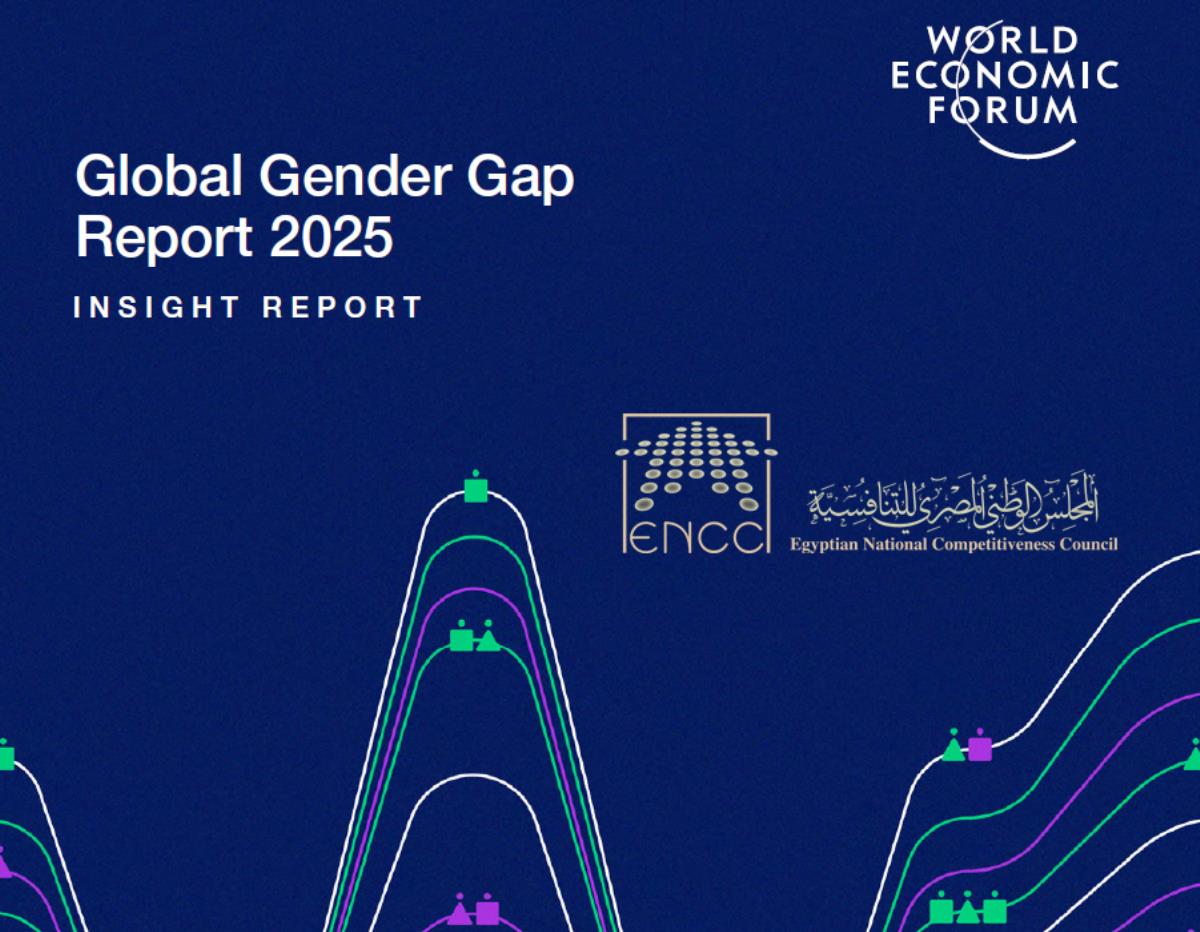Global Gender Gap Report 2025 - Global Performance Analysis │ A Roadmap for Reform

September 17, 2025 │ Cairo
Global Performance Analysis │ A Roadmap for Reform A professional analysis based on official sources: a data card of the release and methodology, global and MENA trends, Egypt's positioning by the numbers, concise tables, and priorities for closing the gaps and a measurable executive roadmap over 6–24 months. The "Global Gender Gap Report 2025" is an annual benchmark that tracks the evolution of gender parity across four key pillars: Economic Participation and Opportunity, Educational Attainment, Health and Survival, and Political Empowerment. In the 2025 edition, the World Economic Forum confirms a global advancement to 68.8% of the gap closed across 148 economies, with the political gap remaining the largest despite some improvement. It also affirms that achieving full parity will take 123 years at the current pace. Regional disparities are also highlighted, with the Middle East and North Africa (MENA) ranking last regionally at 61.7% of the gap closed. The report was published on June 11, 2025, along with a PDF version, "full reader," user guide, and an interactive dashboard. World Economic Forum Name (AR/EN): تقرير الفجوة بين الجنسين العالمي / Global Gender Gap Report 2025 Issuing Body (AR/EN): المنتدى الاقتصادي العالمي / World Economic Forum Latest Edition (Label): 2025 (19th Edition) Publication Date: 2025-06-11 Frequency: Annual Type: Index with rankings Status: Active ✅ Official Landing URL: WEF Publication Page (includes "Download," "Full Reader," and dashboard) Official PDF/Data URL: Full Report (PDF) Methodology / User Guide: User Guide & Methodology + Interactive Dashboard Coverage: 148 economies included in 2025. World Economic Forum The index focuses on gaps in outcomes between women and men, converting values to a 0-1 scale (or percentages) where 1 = full parity. The results are aggregated into four main pillars: The User Guide also provides an explanation for interpreting scores and exploring country profiles via the dashboard. Globally: The gap narrowed to 68.8% closed (145 fixed-sample economies 2024↔2025), driven by improvements in Political Empowerment (+0.7 percentage points) and Economic Participation (+0.4). World Economic Forum Top 5 Globally: Iceland (92.6%), Finland, Norway, the United Kingdom, and New Zealand. All top ten are above 80% of the gap closed. World Economic Forum Time to Parity: 123 years if the current pace continues. World Economic Forum Regional Note (MENA): The region registers a 61.7% gap closed (lowest among regions), with cumulative political improvement since 2006. World Economic Forum Score and Ranking (2025): Egypt (62.5%, ranked 139 of 148) — a drop in ranking and entry into the bottom 10 globally; while Morocco exited the bottom tier (62.8%, 137). World Economic Forum Concise Structural Reading: Strengths tend to be in Education and Health (pillars close to completion globally), while the gaps in the Economy and Politics weigh on Egypt's overall performance.Global Gender Gap Report 2025
1) Introduction
2) Data Card
3) Methodology and Dimensions/Pillars (Concise & Accurate)
4) Global and Regional Trends
5) Egypt's Performance (Facts)
6) Concise Tables/Lists
| Dimension (EN/AR) | What it Measures (Brief) | Significance for Egypt 2025 |
| Economic Participation & Opportunity / المشاركة والفرص الاقتصادية | Gaps in participation, wages, and professional/leadership representation | Weakest pillar and a structural challenge in the labor market |
| Educational Attainment / التحصيل التعليمي | Gaps in enrollment, completion, and literacy | Relatively strong but does not automatically translate into market gains |
| Health & Survival / الصحة والبقاء | Gaps in survival/birth | Close to completion globally |
| Political Empowerment / التمكين السياسي | Gaps in parliament/ministries/head of state | Weak and affects the overall ranking |
7) Performance Gap Analysis & Improvement Priorities (Top 5)
8) Reform Roadmap (6–24 Months)
| Action | Leading Body/Partners | Measurable KPI | Timeline |
| Conditional female employment incentives for hiring/promotion quotas | Planning + Finance + Manpower + Business Federations | +2–3 percentage points annually in female employment in targeted sectors | 6–12 months |
| Nurseries/childcare in work complexes (co-funded vouchers) | Social Solidarity + Planning + Private Sector | Number of activated locations and coverage percentage | 6–12 months |
| Annual wage gap disclosure (standardized template) | Manpower + Stock Exchange + Large/Medium Companies | % of companies disclosing + gap narrowing (≥3 points) | 12 months |
| Leadership pathways for women in government bodies | Organization & Management + Cabinet | Increase in women's representation in senior positions (+5 points) | 12–18 months |
| Aligning skills/training with growth sectors (digital/energy/tourism) | Higher Education + Communications + Private Sector | Number of training contracts ending in employment (number/implementation rate) | 12–24 months |
The 2025 edition shows tangible global improvement (68.8% closed) but the path to parity remains long (an estimated 123 years). Regionally, MENA (61.7%) stays at the bottom of the regions, while Egypt (62.5%, 139/148) is among the lowest tiers globally. This underscores the necessity for targeted employment incentives, wage transparency, leadership and political representation pathways, and employment-linked skills programs. The ENCC will follow the progress of these priorities through quarterly monitoring notes and executive dashboards. Selected Official Links and References:9) Focused Conclusion


